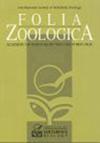东方万籁俱寂:分子分析检索作为雪梨属一部分的雪梨
Q2 Agricultural and Biological Sciences
引用次数: 5
摘要
摘要来自伊朗西部Zagros Mts的Zard Kuh的雪鼠被认为与欧洲雪鼠Chionomys nivalis不同,并被描述为科学上的新物种,命名为C. layi Zykov, 2004年。在随后的几年里,大多数研究Chionomys属的作者都遗漏了这一描述,并且新种的分类身份仍然不确定。在这项研究中,我们进行了有史以来第一次对瓢虫的分类地位进行了测试。我们在雪田体拓扑型中对细胞色素b (1140 bp)和核生长激素受体ghr (870 bp)进行了测序,并将它们与所有可用的雪田体单倍型一起用于系统发育重建。系统发育树的拓扑结构与已发表的结果一致,并且与参考样本中嵌套的layi拓扑结构一致。他们拥有一个支持的姐妹位置,以对抗地理上邻近的高加索和阿尔博尔斯的序列。Kimura-2参数指标在Zagros和Alborz +高加索地区的样品之间获得了相对较低的差异(3.2±0.5)。我们得出结论,layi与C. nivalis同义。我们的研究结果还表明,科佩特达赫地区的欧洲雪田古避难所与里海南部梅西克山脉的赫卡尼亚避难所是分离的。本文章由计算机程序翻译,如有差异,请以英文原文为准。
All quiet in the East: molecular analysis Retrieves Chionomys layi as part of C. nivalis
Abstract. Snow voles from Zard Kuh in Zagros Mts., Western Iran, were identified as distinct from the European snow vole Chionomys nivalis and described as a species new to science under the name C. layi Zykov, 2004. This description was missed in subsequent years by majority of authors dealing with the genus Chionomys, and taxonomic identity of the new species remains uncertain. In this study we conducted the first testing ever performed on taxonomic status of C. layi. We sequenced cytochrome b (1140 bp) and nuclear growth hormone receptor ghr (870 bp) in topotypes of layi and used them, together with all available haplotypes for snow voles, in phylogenetic reconstructions. Topology of phylogenetic trees accorded published results and topotypes of layi nested within reference samples of C. nivalis. They hold a supported sister position against sequences from the geographically nearby Caucasus and Alborz. Kimura-2 parameter metrics retrieved relatively low divergence (3.2 ± 0.5) between samples from the Zagros and the Alborz + Caucasus. We conclude that layi is synonymous with C. nivalis. Our results also show that the ancient refugium for the European snow vole in the Kopet Dagh was detached from the Hyrcanian refugium in the mesic mountains to the south of the Caspian Sea.
求助全文
通过发布文献求助,成功后即可免费获取论文全文。
去求助
来源期刊

Folia Zoologica
生物-动物学
CiteScore
1.70
自引率
0.00%
发文量
0
审稿时长
3 months
期刊介绍:
Information not localized
 求助内容:
求助内容: 应助结果提醒方式:
应助结果提醒方式:


